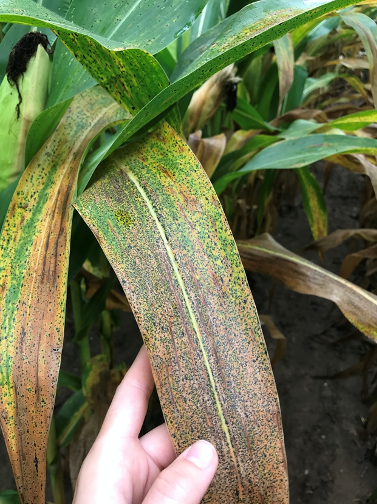Tar spot
 Tar spot, caused by the fungus Phyllachora maydis, is a newly introduced foliar pathogen of corn identified in Michigan in 2016.
Tar spot, caused by the fungus Phyllachora maydis, is a newly introduced foliar pathogen of corn identified in Michigan in 2016.
Signs of tar spot include small, raised, black fruiting bodies on both surfaces of the corn leaf. Sometimes these fruiting bodies are surrounded by a necrotic halo, forming a “fisheye” lesion. Yield losses in the US due to tar spot were first documented during the 2018 tar spot epidemic.
Our lab is interested in the management of this disease, including the role of agronomic practices on tar spot, specifically how planting population and nitrogen fertility affects the severity of tar spot infections.To better understand the nature of the pathogen, we are looking at molecular mechanisms of infection to understand how to combat the pathogen as well as defense mechanisms in corn to help breed for disease resistance.
We are also coordinating with other researchers across the Midwest to perform hybrid screenings and foliar fungicide trials to identify best application timing and products to manage tar spot.



 Print
Print Email
Email